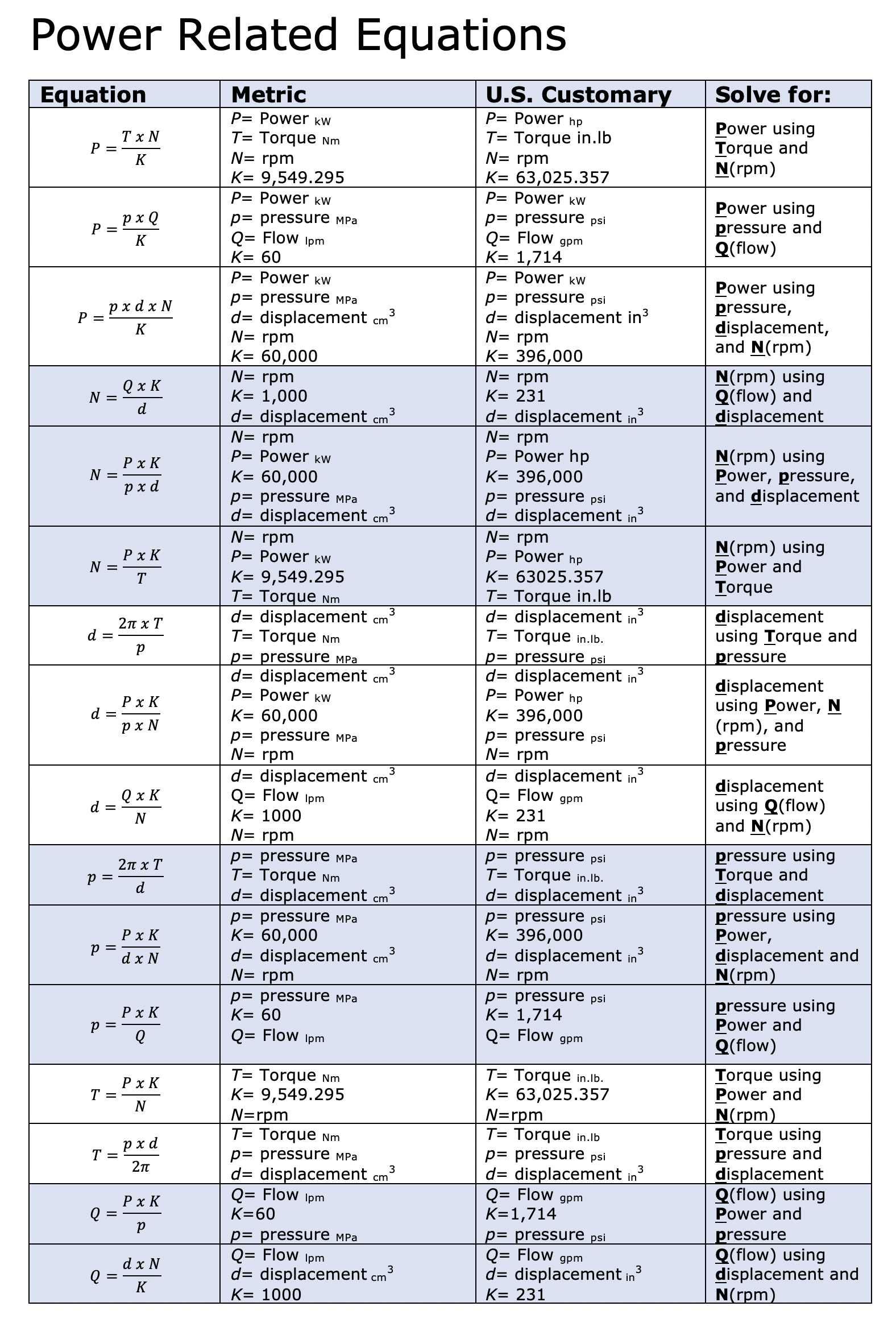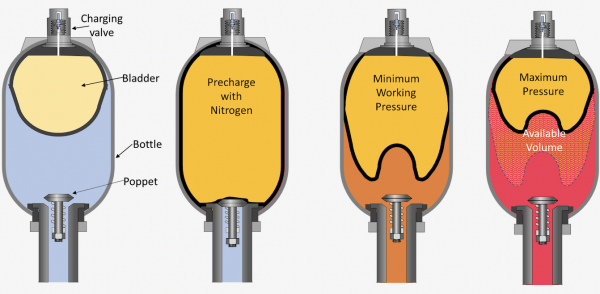Raising the bar: Something for Your Toolbox

I have a collection of equations floating around in my head for use when trying to come up with a fluid power solution. The problem is, many times what I am trying to find is embedded in the equation. For example, I can rattle off the power equation using torque and rpm: P = T x N / K.
Wait a second! What is this power equation? We know HP = T x rpm / 63,025 or kW = T x rpm / 9,549, but not P = T x N / K. And what is this K value all about?
IFPS had decided that we needed to give equal importance to metric and U.S. customary (imperial) units in our equations and the metric units were to conform to ISO standards. I was assigned the task of providing a list of unitless equations and then separately state the units for metric and U.S. customary. That made it necessary to provide K values. These are the constants applied to produce the correct outcome for each set of units as shown in the example below. In the unitless equation, power is a factor of torque and rpm. But a different constant (K) is needed when solving for kW than when solving for hp.

Now, getting back to the problem of finding something embedded in the equation, what if I want to determine N (rpm)? I have to jump back to what I learned in high school algebra class and rework the equation. Multiplying P times the denominator on the other side of the equation gives me PK = TN, and then solving for N, I divide PK by T and get N = PK / T. That was easy enough, but it took a moment and interrupted my thought process.
So, what I am giving you is this: I took the three major power equations – one based on torque and rpm like the one above; one based on flow and pressure; and one based on displacement, pressure, and rpm. I then rearranged the equations to solve for each of the variables within the power equations. The result is the chart that follows. All the equations are on one page including both metric and U.S. customary. Grab it, print it out, and hang it on the wall or stick it in your toolbox. This is one of those things I wish someone had given to me long ago.
If you find this useful, please let me know. I may be able to provide more such tools if it would be helpful. You may also want to consider purchasing the Fluid Power Math for Certification manual from IFPS. It contains many more equations in this format.
Click here to download the chart.
Fluid Power Journal encourages conversation about issues addressed in “Raising the bar.” Please use the Comment function at the bottom of the page to take part in the discussion with author Dan Helgerson.
Related Posts
Get Our Enews!
Sign up for the FPJ Insider Guide
Sign up to receive fluid power industry news, economic updates, professional development content, and product news delivered right to your inbox.
We will never share your data with a third party without your permission. Adjust your email preferences at any time, and unsubscribing is quick and easy.
Fluid Power Journal Resources








